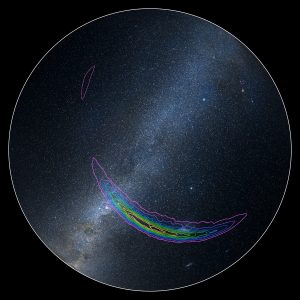This post is part of a series about quick questions and answers about the Virgo experiment and the science of gravitational waves. Do you have a quick question? Tell us and we will reply!
Can we identify the cosmic sources of gravitational waves?
The information collected by the network of LIGO and Virgo instruments will provide a rather rough direction of the sources of gravitational waves in the sky, much larger than the apparent angular size of the full Moon. Partnerships have been built with classical telescopes observing at various electromagnetic wavelengths as well as neutrino detectors. When a gravitational wave candidate event is identified, these instruments will explore its potential location in the sky to search for optical, X-ray, gamma-ray or radio transient counterparts. The simultaneous observation of gravitational waves and electromagnetic signals could provide a much better sky localization, identification of the astrophysical source and would enable a much deeper study of the violent processes producing these signals.


